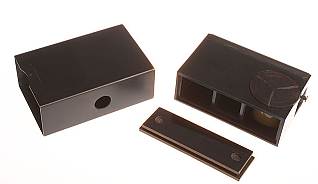During the war, spies and soldiers needed to conceal all kinds of objects and messages in order to evade the enemy. Normal, everyday items became essential spying devices during war time. They would have a secret compartment or section where information, messages, spy equipment or contraband could be hidden. These devices could be used for smuggling escape equipment into prison camps and transferring critical information or instructions behind enemy lines.
Concealment devices were used well before the 20th Century. The ancient Greeks from thousands of years BC, and the Romans in the 8th Century BC, had used concealment methods for communicating secret information or delivering messages during war time. Notes would be wrapped in the bandages of injured soldiers, or sown into the bottom of a sandal. But it was during the two World Wars and the Cold War that concealment methods were really required to be radically improved so that secrets would remain elusive to the enemy.
Two types of devices were created – active and passive. Active devices are those that have a secret built-in section to house objects or messages while the device still maintains its original use. Passive devices, on the other hand, are those that simply act as a hiding place, such as a book that is hollowed out as a safe or hiding place but is no longer usable as a book. Whether active or passive, the device must not arouse suspicion in others, especially the enemy. It must also not be evident if the person transporting it comes to be searched or interrogated.
The Allied intelligence service of the CIA in the US and MI5 in Britain had research laboratories built so that they could develop the latest in concealment technology. They dealt in everything from furniture, accessories, clothes and electronics — all made by experts in their fields from carpenters and tailors to scientists and IT developers. The builders would have to be imaginative and creative to get this special assignment.
An example of innovative concealment devices actually used in combat includes a pipe with a secret compartment in the base underneath the tobacco; if the user thought they were going to be discovered, a twist on the stem of the pipe would open the compartment and burn up whatever message was inside. Passive pipes were also produced that couldn’t be smoked but could be used as a radio.
Another device was a pack of playing cards to conceal a secret map — pieces of maps were printed onto lightweight tissue paper and stuck in between the front and back of a playing card. The map sections could be made visible by wetting the card and peeling apart its front and back. The entire pack would form a full map, The Art of Manliness reports.
The compass, the soldier’s vital friend, could be concealed in many ways – hidden in buttons, soap and even nut shells. Pens and pencils could also be converted into compasses as well as into razors and magnetic needles. Starting at the turn of the 20th century shoes and boots were hollowed out to hide notes. During World War Two boot heels held food and maps. Hollow coins developed by the Soviets before World War Two were traded back and forth by Soviet spies based in the States and used to hide film or encrypted messages. The US didn’t discover this until the 1950s, when a nickel dropped by a US civilian cracked open and a secret Russian message was found inside.
